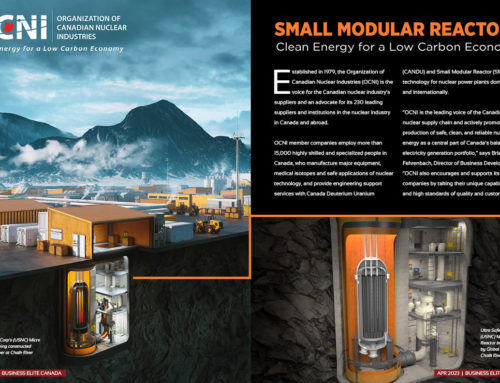BC Hydro’s Site C project has reached a critical milestone with the first generating unit now officially in service, marking the start of power production from the massive $16 billion hydroelectric endeavor on the Peace River in northeast BC. Set for full completion by fall 2025, Site C will ultimately provide 1,100 megawatts of firm capacity, generating around 5,100 gigawatt-hours of clean electricity annually—enough to power approximately 450,000 homes. This contribution is a substantial boost to BC’s clean energy supply, aligning with BC Hydro’s strategic goal of addressing a projected 15 per cent rise in electricity demand by 2030.
The project has achieved nearly 90 per cent completion, with reservoir filling finished and five additional generating units slated to come online by fall 2025. BC Hydro has invested extensively in environmental mitigation, creating fish habitats and wetlands while compensating for agricultural land impacts through the $20 million Peace Agricultural Compensation Fund.
“Our electricity grid is already one of the cleanest in the world, and to meet the scale and pace of what’s required, we need to invest in our system and build for the future,” said Chris O’Riley, president and CEO of BC Hydro. “We have already taken significant steps toward sourcing the clean electricity needed to meet the future demand, and we are now embarking on the next step, our $36 billion 10-year capital plan, which includes everything from investing in our generation assets and large transmission infrastructure to the substations and local wires that deliver power to homes and businesses across the province.”
Finishing the reservoir filling was a complex process that increased water levels at the dam site by 43 meters over 11 weeks. Environmental and cultural monitors, including those from Treaty 8 First Nations, were engaged throughout this phase to ensure minimal impact on wildlife and preserve cultural integrity. Reservoir shoreline and slope stability continue to be closely monitored as part of long-term safety measures.
Site C is an integral part of BC Hydro’s commitment to sustainability, ensuring that British Columbia’s energy grid remains robust, reliable, and primarily clean. With 98 per cent of BC Hydro’s power already generated from clean or renewable resources, the addition of Site C will strengthen the province’s leadership in clean energy generation across North America. BC Hydro has also invested extensively in mitigating environmental impacts with over a thousand inspections and one million instrumentation readings were conducted during reservoir filling to ensure the safety and functionality of key project structures, including the earthfill dam, powerhouse, and spillways.
Greg Alexis, Senior Manager of Public Affairs for the Site C project, emphasizes how critical this hydroelectric facility is to BC Hydro’s vision. “Once we’re finished, this project will generate enough electricity to power close to half a million homes,” he says, underscoring the sheer scale of the project’s contribution to meeting growing energy demands in BC.
Moreover, Site C will play a pivotal role in the province’s broader energy diversification efforts. As part of a larger clean energy initiative, BC Hydro has also initiated a Call for Power, seeking an additional 3,000 gigawatt-hours of clean and renewable electricity from sources like wind and solar. This ongoing commitment is expected to boost BC Hydro’s capacity by 5 per cent, further reinforcing its focus on sustainable energy solutions.
Benefits to British Columbia
The Site C project will deliver numerous benefits to BC’s citizens beyond just electricity generation. One of the immediate advantages is the increased availability of clean, low-cost power for residents and businesses across the province. Site C’s 5,100 gigawatt-hours of energy will also contribute to reducing greenhouse gas emissions by offsetting the use of non-renewable energy sources.
Alexis points out that the project’s completion will also provide substantial benefits to BC’s electric vehicle infrastructure. “Site C will produce enough electricity to power 1.7 million electric vehicles per year,” he says, adding the project’s alignment with BC’s goals for expanding the use of electric vehicles and reducing carbon emissions.
The project also carries important environmental and community considerations. Despite its size, less than one percent of the agricultural land in the Peace Agricultural Region will be affected by the reservoir created for the dam. To mitigate this impact, BC Hydro has established a $20 million Peace Agricultural Compensation Fund, designed to support local agricultural production and community initiatives. Indigenous participation has also been central, with cultural monitors actively involved in overseeing reservoir filling and ensuring respect for cultural heritage during construction phases.
“We’re taking action to build a clean energy future and create thousands of construction jobs for skilled workers as major infrastructure projects like Site C reach completion,” said Josie Osborne, Minister of Energy, Mines and Low Carbon Innovation. “Together with our first call for power in over 15 years, BC Hydro’s new capital plan, with almost $4 billion in spending every year for the next decade will drive economic growth for communities all over the province and ensure households and businesses can power up with clean, reliable and affordable electricity.”
Environmental and Engineering Challenges
Site C’s environmental impact has been a focal point throughout its development, with BC Hydro taking significant measures to address concerns. Extensive efforts have been made to mitigate effects on local wildlife, including vegetation removal in the reservoir area, construction of fish habitats, and the development of wetlands. These initiatives are essential in ensuring that the project meets environmental safety standards while maintaining its operational goals.
From an engineering perspective, the project has involved several complex milestones, including the diversion of the Peace River in 2020. This diversion allowed for the construction of the main dam structure, a critical step that involved rerouting the river through two tunnels, each approximately 750 meters long and 11 meters in diameter. These tunnels, which were integral to managing water flow during the construction phase, were sealed in September 2024 as the project moved closer to completion.
BC Hydro’s Chief Engineer explains that the construction of the spillway, the largest in BC’s hydroelectric fleet, was designed with extreme weather events in mind. “We have a rigorous methodology around dam safety and extreme floods,” he says.
Final Phase of Construction
With reservoir filling complete, construction is now focused on the powerhouse and generating station, with all six generating units expected to be operational by fall 2025. Testing and commissioning of the second unit are already underway. Premier David Eby highlighted the project’s significance, stating, “Site C is an investment not only in the infrastructure of today but in the sustainable future of tomorrow.”
As the province prepares for the operation of this landmark project, its long-term contributions are clear. Beyond providing clean, reliable energy, Site C sets a benchmark for sustainable development in large-scale infrastructure. The power generated will also support BC Hydro’s broader energy goals, including its Call for Power program to secure an additional 3,000 gigawatt-hours of renewable energy annually. This aligns with the province’s vision of becoming a leader in renewable energy production.
Site C’s completion is not merely about energy security; it represents a bold step towards BC’s commitment to tackling climate change and fostering economic development in the region. Enhanced employment opportunities, strengthened partnerships with Indigenous communities, and innovations in energy management reinforce the project’s multifaceted benefits.
As the project nears its final stages, it continues to be a point of pride for the province, with Premier David Eby remarking on its importance. “Site C represents a critical component of BC’s future energy needs and its clean energy leadership in Canada. This is an investment not only in the infrastructure of today but in the sustainable future of tomorrow.”
For more information, please visit www.sitecproject.com







